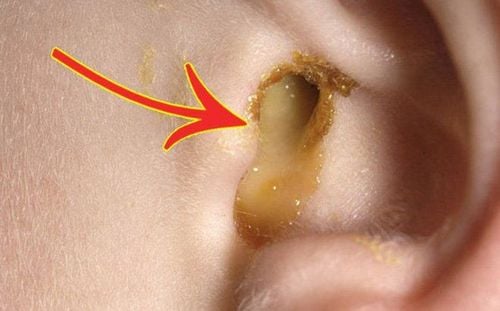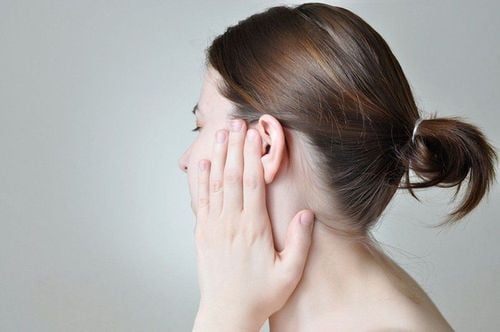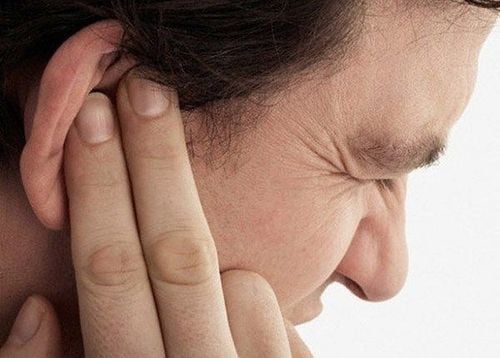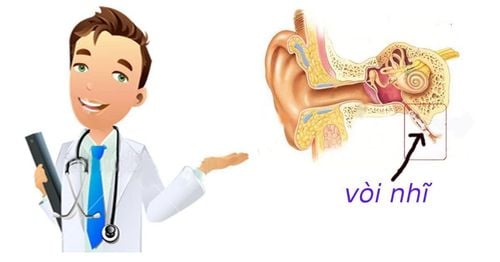This is an automatically translated article.
The article was professionally consulted by Specialist Doctor of Otolaryngology - Department of Medical Examination and Internal Medicine - Vinmec Hai Phong International Hospital.
The outer ear canal is the part between the eardrum and the eardrum, the shape is curved like the letter S. The curves and twists of the ear canal help to receive and absorb sound (sound energy) from all sides into the ear canal. Some common diseases in the outer ear canal include: otitis externa, otitis media...
1. Where is the outer ear canal located?
The outer ear canal is the part located outside, between the earlobe and the eardrum. The outer ear canal is usually not straight, but curved like an S. In adults, the outer ear canal is slightly upward, then slightly forward, and then downward as it approaches the eardrum. The outer part of the ear canal contains tiny hairs, the oil glands that make earwax. Here, there is a thick layer of skin surrounding the cartilage, while the inner part has a thin layer of skin covering the temporal bone.
The ear canal has a self-cleaning mechanism. The skin grows from the eardrum to the outer ear canal. The soft bristles move gently to continuously push dry earwax and peel off the skin.
Accordingly, the size, length, width and orientation of the outer ear canal in each person is very different. On average, in adults, the ear canal length is about 2.3 cm to 2.9 cm with a diameter of about 0.7 cm. The distance from the ear opening to the eardrum, the ear canal becomes narrow as it enters the temporal bone. This narrow area is called the isthmus. The further away from the ear, the diameter of the ear canal is as large as the original size.
The outer ear canal is usually warm and humid, and the temperature and humidity are relatively stable. Many hospitals use an ear thermometer, similar to an otoscope, to determine body temperature in seconds.
Through the above information, readers have partly known what the outer ear canal is? Where is the outer ear canal located? Reality. Due to its location, the outer ear canal often suffers from ear infections that affect health and even cause permanent hearing loss such as: otitis externa, otitis media,...
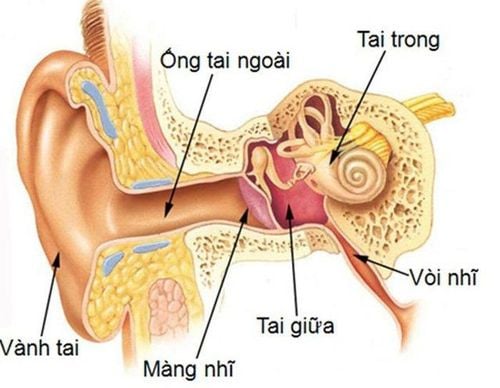
2. What is the disease otitis externa?
2.1. Causes of otitis externa otitis externa is a condition that causes pain, redness, and swelling in your outer ear canal, which is the tube that leads into the ear. Bacterial causes of otitis externa. But they can also be caused by a fungal infection, irritation, or eczema in or around the ear canal. Some possible causes of otitis externa are as follows:
Injury to your ear canal by fingernails or earwax removal tools. Use hearing aids or earplugs: these can damage or irritate your ear canal or harbor bacteria. Swimming: this can wash away your earwax, which then makes it easier for bacteria to grow there. Swimming in polluted water can introduce bacteria to your ears. Sensitivity to products like hairspray and hair dye these can irritate your ear canal. A buildup of earwax in your ear canal, or accidentally pushing earwax into your ear when cleaning it. This can trap water in your ear, making it vulnerable and more likely to become infected. There is too little earwax (possibly from too much cleaning). Earwax protects the inside of your ear from infection. The ear canal is narrow, which means water can get trapped and bacteria are more likely to grow. With skin conditions, such as eczema or psoriasis, broken skin is more likely to become inflamed.
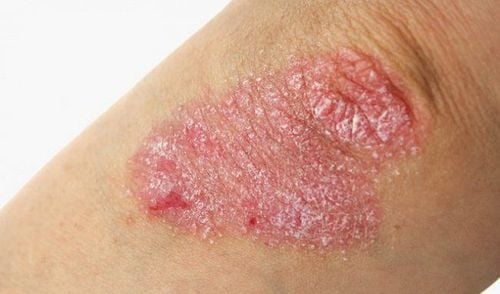
In addition, people with diabetes who have a weak immune system are also prone to problems with otitis media. In fact, otitis externa can occur at any age. It tends to be especially common during the summer months, especially among children. More likely to go swimming afterward, and water entering your ear can sometimes lead to otitis externa.
2.2. Symptoms of otitis externa Symptoms of otitis externa are as follows:
The ear canal is red and swollen. Dry skin or eczema in or around your ear canal. Ear pain may get worse when you push or pull your ear. Itchy, pus draining from your ear. Hearing is temporarily reduced if the swelling is enough to block your ear canal. Increased body temperature, high fever. There is a feeling of fullness in the ear. These are signs of an ear infection, so if you notice any of these symptoms, contact your doctor. If you have severe pain and high temperature or feel unwell, see your doctor for treatment to prevent hearing loss.
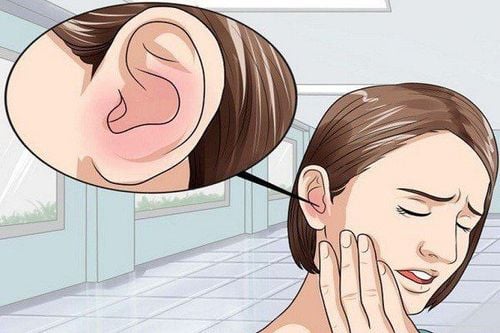
Otitis externa can last for a short time (acute) or for a long time (chronic):
Acute otitis externa comes suddenly. They usually go away within six weeks, but the infection can return. Chronic otitis externa causes persistent symptoms that can last for several months or more. This can lead to permanent hearing loss. Accordingly, an outer ear infection can affect a small part of the ear canal or most of the ear canal. In particular, if you have localized otitis externa, a hair follicle at the entrance to your ear canal becomes infected, causing a boil.
If in case the infection affects more to the ear canal and to the eardrum, this is called diffuse or diffuse otitis externa. This type of otitis externa is sometimes called swimmer's ear because it usually occurs after you've spent time in the water.
Malignant otitis externa is a widespread severe necrotizing inflammation that can be fatal. It mainly affects people whose immune systems are not working well or if the person has diabetes. Malignant otitis externa should be treated immediately.
2.3. Treatment of otitis externa Most infections clear up quickly with the right treatment, but some can last for three months or longer. Treatment for otitis externa usually involves controlling pain and reducing inflammation. It also aims to prevent the infection from returning. Your doctor may prescribe ear drops and pain relievers. There are several possible remedies to try while you are using these treatments:
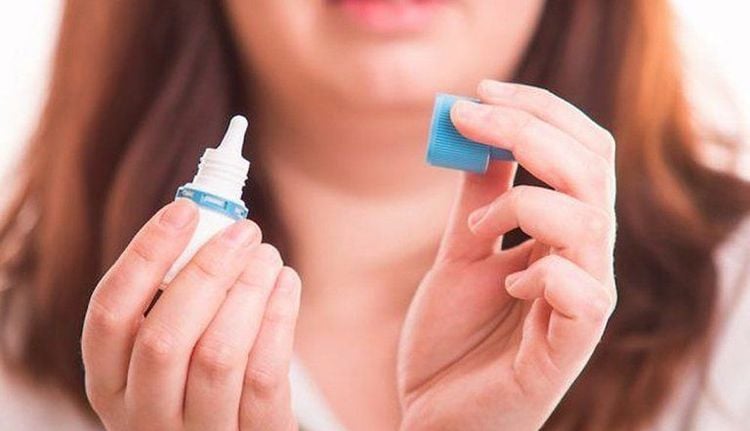
Over-the-counter pain relievers: Over-the-counter pain relievers such as paracetamol or ibuprofen can be used to help relieve pain. If you have a lot of pain, your doctor may recommend a pain reliever called codeine. Acidic ear drops or sprays (such as acetic acid): Acidic ear drops or sprays can stop certain types of bacteria and fungi from growing in your ears. These are usually recommended for mild otitis externa. You may also be recommended to use these with other treatments if you have a long-term (chronic) outer ear infection. Some of these can be purchased from a pharmacy without a prescription. Antibiotic ear drops or sprays: Antibiotics can be combined with a corticosteroid. Usually need to use them for seven days. But if your symptoms don't go away completely, your doctor may recommend using them longer. Your doctor may also suggest switching from ear drops to a spray to see if it works better for you. Antifungal medications or ear sprays: You may be prescribed these if your doctor can see signs of a fungal infection in your ear canal. Antibiotic tablets or capsules: Oral antibiotics are not usually needed for otitis externa. But your GP can prescribe them if you have a serious infection. You may be prescribed oral antibiotics if the infection has spread beyond the ear canal.
Corticosteroid ear drops: These can reduce redness and swelling. But there's not enough evidence that they work well for otitis externa, so doctors can only prescribe them in combination with other treatments. Combination treatment: These ear drops often contain a combination of corticosteroids, antibiotics, and antifungals. They are recommended for more serious infections.

If you have dry skin, eczema in or around your outer ear, your doctor may prescribe a topical corticosteroid cream or ointment. You will need to use it sparingly and always read the leaflet that comes with the medicine. If you have any questions, talk to your local pharmacist.
The right treatment will depend on the extent of the infection. It also depends on whether the infection is short-term or long-term. Your doctor may need to remove some of the discharge from your ear, before they can treat you properly. If the infection keeps coming back, even after treatment, see a doctor who specializes in ENT problems.
3. Inflammation of the middle ear
Otitis media is a painful ear infection. Occurs when the area behind the eardrum called the middle ear becomes inflamed and infected. Otitis media is more common in children (ages 6 to 36 months) because the eustachian tube is shorter and more transverse than in older children and adults. Otitis media occurs when a child's eustachian tube becomes swollen, blocking and retaining fluid in the middle ear. The fluid trapped in this ear can become infected.
The eustachian tube can be swollen or blocked by: allergies, flu, sinus infections, infected or enlarged adenoids, taken while lying down (in infants).
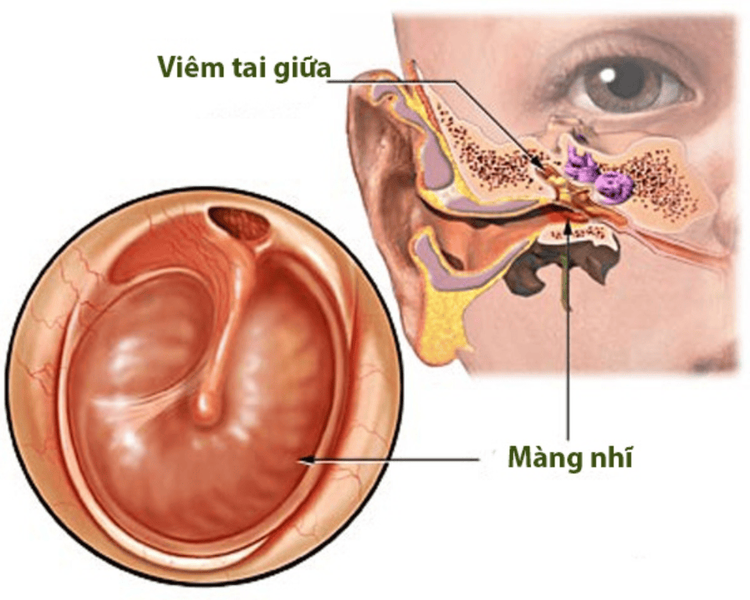
3.2. Symptoms of otitis media Infants and children may have one or more of the following symptoms of otitis media:
Frequent fussiness, irritability Children have trouble sleeping, insomnia Feeling full in the ear, discharge from the ear Children with high fever, vomiting, diarrhea Children with hearing imbalance or hearing loss Signs and symptoms of otitis media in adults are as follows: Ear pain, drainage of fluid from ears, hearing loss, sore throat.
3.3. Treatment of otitis media Most cases of otitis media resolve without antibiotic treatment. Home treatment and pain relievers are often recommended before antibiotics to avoid overuse of antibiotics and reduce the risk of adverse reactions from antibiotics. Treatments for otitis media are as follows:
Home care: Your doctor may recommend the following home care treatments to ease your child's pain while waiting for the otitis media to go away : use a warm, damp washcloth on the infected ear, use over-the-counter (OTC) ear drops for pain relief. Take OTC pain relievers such as ibuprofen (Advil, Motrin) and acetaminophen (Tylenol).
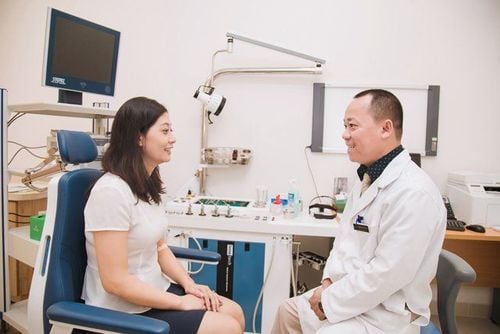
Medication use: Your doctor may also prescribe ear and other pain relievers. Your doctor may prescribe antibiotics if your symptoms don't go away after a few days of home treatment. Surgery: Your doctor may recommend surgery if the infection doesn't go away with treatment or if you have recurrent ear infections. Surgical options for otitis media include: Electromagnetic removal of adenoids should be surgically removed if they are widespread or recurrent. A surgical procedure is used to insert small tubes into the ear, tubes that allow air and fluid to escape from the middle ear.
4. Measures to prevent ear diseases
To reduce the risk of ear diseases, especially otitis externa and otitis media, you can take the following measures:
Dry your ears with a dry towel or hair dryer (on low heat setting). best) after washing. Do not use cotton balls or other objects to clean your ear canal. If you use earplugs regularly, clean them with medical alcohol. Use earplugs when you go swimming. Always dry the water out of your ears after swimming or showering. Do not swim in polluted water. Avoid washing your ears with soap as this damages the natural acidity of your ear canal. Wash hands and toys often to reduce your baby's risk of colds or other respiratory infections Avoid tobacco smoke Seasonal flu shots and pneumococcal vaccine, breastfeed your baby instead of a bottle if It is possible to increase the child's resistance.
Hope the above article will help you better understand what the external ear canal is and common ear diseases, thereby taking preventive measures and timely treatment for you and your loved ones to stay healthy. best health at work and study.
For any questions, please contact directly to Vinmec International General Hospital nationwide or book an appointment.




